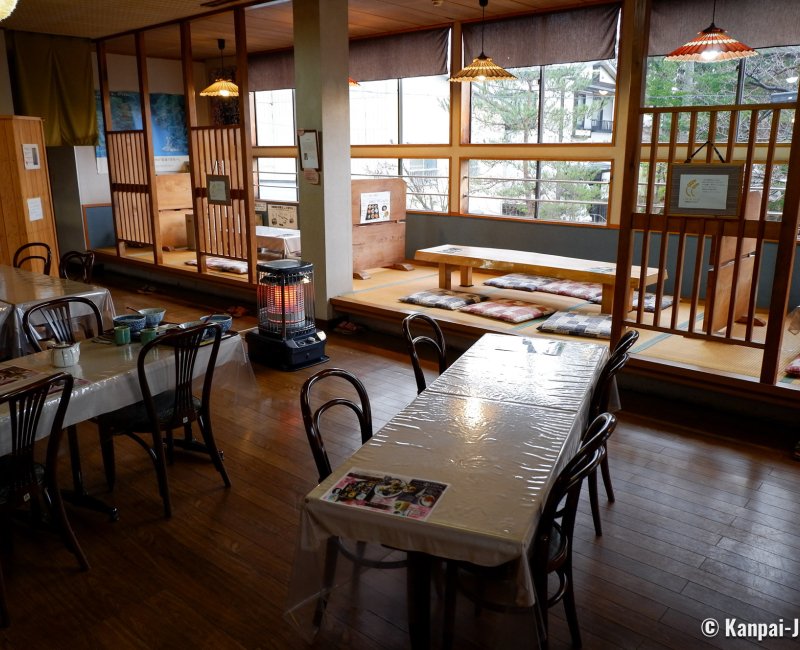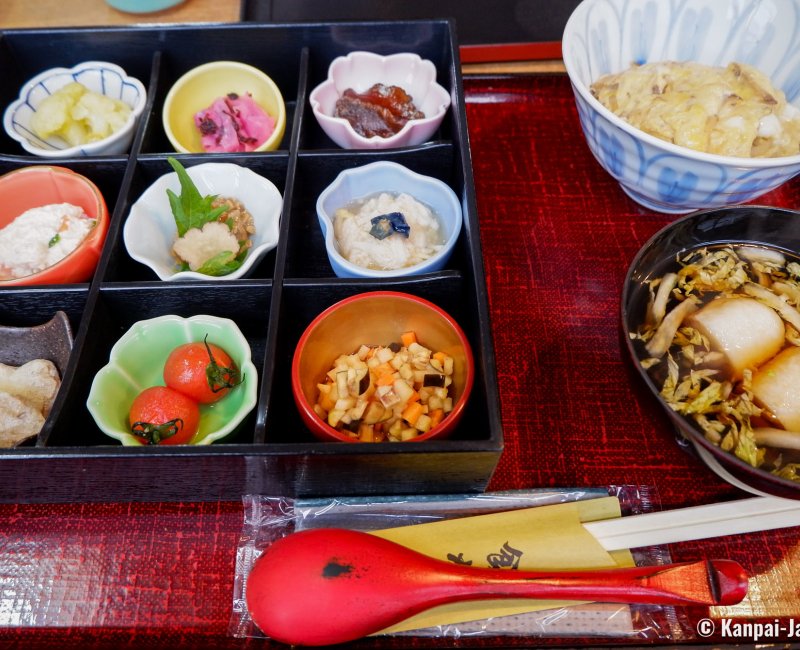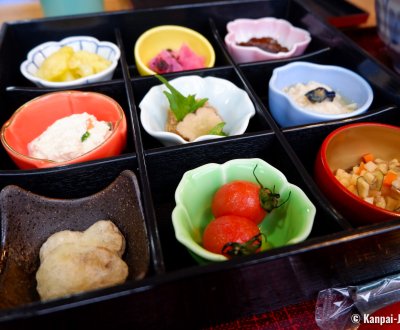Shokudo Inaho
Tsukemono Restaurant in Kakunodate
Shokudo Inaho is a restaurant in Kakunodate, in Akita prefecture in the north-west of Japan. Ideally located in the historical center of the city, it serves affordable regional specialties, with a highlight on traditional tsukemono pickles.
Shokudo Inaho is located between Kakunodate’s former merchant districts and samurai district, and a few hundred meters away from the city’s JR station. As the word "shokudo" in its name implies, it is a local Japanese cuisine restaurant, serving a small selection of dishes at very affordable prices in an unassuming place.
The 2-story building is at the junction of 2 streets and its outside look promises some rusticity, with its front made of slightly washed-out dark wood and decorated with large posters showing its specialties.
The restaurant room can cater to up to 30 customers, and is located at the upper floor. Customers can either seat at one of the few conventional tables, or at one of the benches covered in tatami along the window. Several touches of clear wood provide an additional warmth to the simple decor.

Simple regional dishes with local ingredients
The restaurant serves teishoku set meals and donburi cooked with regional products, such as Hinai-jidori chicken and Inaniwa udon noodles, and boasts a cooking without any additive. What makes Shokudo Inaho stand out is its use of the tsukemono pickles, called gakko in Akita’s dialect.
Tsukemono is a term for fermented food. Fermentation as a way of preserving vegetables is widespread in Japan, and each region has developed its own specialty and process. The most commonly known tsukemono are for example, the salted plum umeboshi and the marinated radish takuan. Tsukemono are served in small portions, but they bring a lot of nutrients, help balance the food flavors and are renowned for helping with digestion.

Gakko fermented vegetables
The staple meal in Shokudo Inaho is certainly the Gakko Kaiseki Teishoku menu. It comes on a special tray, with numerous smaller gakko dishes that are variations of marinated, pickled or fermented vegetables: contrary to the kaiseki-style cuisine, they are all served at the same time.
The tray is divided into 9 boxes and contains as many gakko types, that change according to the season. A typical menu can include for example:
- A mix of tamanegi gakko (fermented onion) and kabocha squash;
- A dango 🍡 rice cake filled with hijiki seaweed and fermented seasonal vegetables, and of soy okara (pulp);
- A mix of local green vegetables prepared in gakko and of finely sliced daikon radish;
- Iced iburi gakko (a sweet and savory recipe);
- Iburi gakko prepared in tempura;
- A mix of iburi gakko and natto;
- Tomato fermented with koji salt;
- A vinegared mix of pickled white vegetables and of Japanese yam (nagaimo);
- A mix of pickled carrots and daikon radish that have simmered in a dashi broth.
This set is served with a kiritanpo (rice sticks) soup with seasonal vegetables, and an omelet seasoned with iburi gakko.
Iburi gakko is a specialty of Akita: it consists of a white daikon radish that was dried for a few days, then fermented for several months with rice bran, salt and sugar. The result is a crunchy vegetable with a sweet and savory taste.
A few original and seasonal extras are also served such as akebia tempura (an autumn 🍁 fruit with a bitter taste) or Akita apple tempura in winter.
Close to the Nishinomiya Residence in the former merchant district, Shokudo Inaho is a walk-in seating restaurant (contrary to its upscale counterpart Ryotei Inaho, where reservation is mandatory). There, you can have a simple tasty meal, locally sourced for an affordable price.

